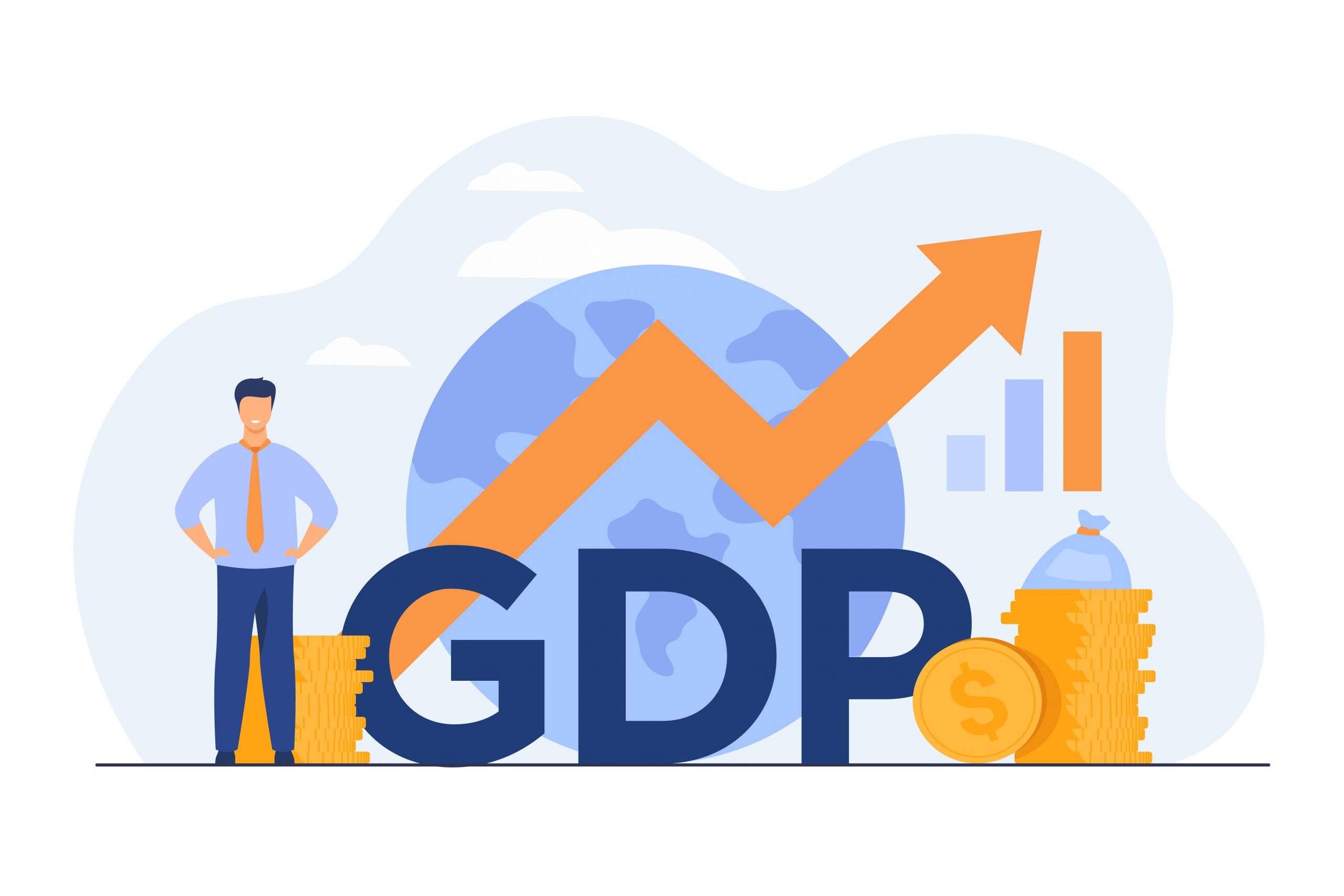March 11, 2024
GDP growth in the euro area and the EU
In the fourth quarter of 2023, seasonally adjusted GDP remained stable in both the euro area and the EU, compared with the previous quarter, according to an estimate published by Eurostat, the statistical office of the European Union.
In the third quarter of 2023, GDP had decreased by 0.1% in the euro area and had remained stable in the EU.
Compared with the same quarter of the previous year, seasonally adjusted GDP increased by 0.1% in the euro area and by 0.2% in the EU in the fourth quarter of 2023, after +0.1% in both zones in the previous quarter.
For the year 2023 as a whole, GDP increased by 0.4% in both the euro area and the EU, after +3.4% in both zones in 2022.
During the fourth quarter of 2023, GDP in the United States increased by 0.8% compared to the previous quarter (after +1.2% in the third quarter of 2023). Compared with the same quarter of the previous year, GDP increased by 3.1% (after +2.9% in the previous quarter).
GDP growth by Member State
Denmark (+2.0%) recorded the highest increase of GDP compared to the previous quarter, followed by Croatia (+1.3%) and Slovenia (+1.1%). The highest decreases were observed in Ireland (-3.4%), followed by Estonia and Finland (both ‑0.7%).
GDP components and contributions to growth
GDP components evolved in the fourth quarter of 2023 as follows:
-
household final consumption expenditure increased by 0.1% in the euro area and by 0.2% in the EU (after +0.3% in both the euro area and the EU in the previous quarter),
-
government final consumption expenditure increased by 0.6% in the euro area and by 0.3 in the EU (after +0.6% in both zones in the previous quarter),
-
gross fixed capital formation increased by 1.0% in the euro area and by 0.8% in the EU (after 0.0% and +0.1% respectively),
-
exports were stable in the euro area and increased by 0.8% in the EU (after -1.2% in the euro area and -1.1%in the EU), and
-
imports increase by 0.6% in the euro area and by 1.2% in the EU (after -1.4% and -1.6% respectively).
The contribution to GDP growth from:
-
household final consumption expenditure was negligible for the euro area and positive for the EU (+0.1 percentage points – pp),
-
government final expenditure was positive for both zones (+0.1 pp for both),
-
gross fixed capital formation was positive for both the euro area and the EU (+0.2 pp for both),
-
changes in inventories was negative for both zones (-0.1 pp for both), and
-
exports minus imports was negative for both the euro area (-0.3 pp) and the EU (-0.2 pp).
Employment growth in the euro area and EU
The number of employed persons increased by 0.3% in the euro area and by 0.2% in the EU in the fourth quarter of 2023, compared with the previous quarter. In the third quarter of 2023, employment had increased by 0.2% in both zones.
Compared with the same quarter of the previous year, employment increased by 1.2% in the euro area and by 1.0% in the EU in the fourth quarter of 2023, after +1.4% in the euro area and +1.2% in the EU in the third quarter of 2023.
For the year 2023 as a whole, the number of persons employed increased by 1.4% in the euro area and by 1.2% in the EU, after +2.3% and +2.0% respectively in 2022.
Hours worked increased by 0.1% in the euro area and by 0.2% in the EU in the fourth quarter of 2023, compared with the previous quarter. Compared with the same quarter of the previous year, the hours worked increased by 0.7% in the euro area and by 0.4% in the EU.
For the year 2023 as a whole, the number of hours worked increased by 1.3% in the euro area and by 1.0% in the EU, after +3.4% and +2.8% respectively in 2022.
These data provide a picture of labour input consistent with the output and income measure of national accounts.
Employment growth in Member States
In the fourth quarter of 2023, Romania (+1.5%), Malta (+1.4%) and Spain (+0.8%) recorded the highest growth of employment in persons compared with the previous quarter. The highest decline of employment was recorded in Latvia (-1.0%), Finland (-0.6%) and Poland (-0.2%).
Employment levels in the euro area and EU
Based on seasonally adjusted figures, Eurostat estimates that in the fourth quarter of 2023, 217.1 million people were employed in the EU, of which 169.3 million were in the euro area.
Evolution of labour productivity in the euro area and EU
The combination of GDP and employment data allows an estimation of labour productivity. The analysis of growth compared to the same quarter of the previous year shows that productivity growth fluctuated around 1% for both zones between 2013 and 2018 before the COVID-19 pandemic caused high volatility in 2020.
In the fourth quarter 2023, productivity based on persons decreased by 1.1% in the euro area and by 0.8% in the EU compared to the same quarter of the previous year.
Based on hours worked, productivity compared with the same quarter of the previous year decreased by 1.2% in the euro area and by 0.7% in the EU.
Source: Eurostat
Legal Notice: The information in this article is intended for information purposes only. It is not intended for professional information purposes specific to a person or an institution. Every institution has different requirements because of its own circumstances even though they bear a resemblance to each other. Consequently, it is your interest to consult on an expert before taking a decision based on information stated in this article and putting into practice. Neither Karen Audit nor related person or institutions are not responsible for any damages or losses that might occur in consequence of the use of the information in this article by private or formal, real or legal person and institutions.






